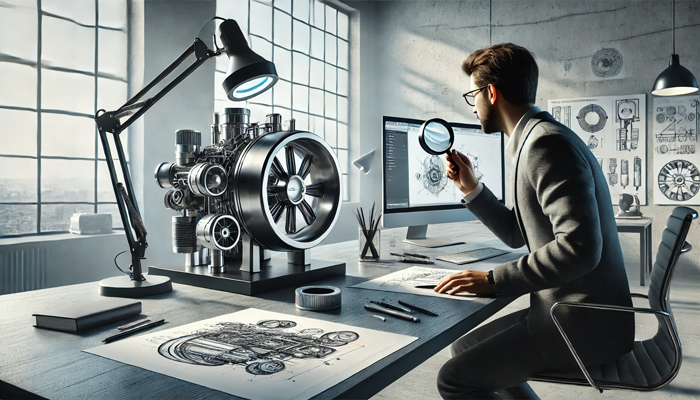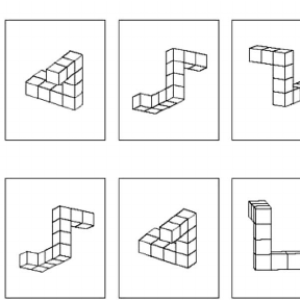
Introduction: The Power of Observational Skills in Industrial Design
In the world of industrial design, the ability to observe deeply and thoughtfully is a crucial yet often overlooked skill. Observational skills go beyond simply seeing; they involve understanding patterns, identifying subtle details, and interpreting user behavior to inform design decisions. These skills serve as the foundation for user-centered innovation, problem-solving, and the development of functional, aesthetically pleasing products.
With growing market demands and rapid technological advancements, designers need to sharpen their ability to notice what others miss—whether it’s inefficiencies in everyday objects, unmet user needs, or design flaws. Fortunately, observational skills in industrial design are not innate but can be developed and strengthened through deliberate practice, exposure to new perspectives, and the use of digital tools.
This article explores practical methods for enhancing observational skills and discusses how designers can leverage nature, art, and advanced technologies to train their minds to see with greater clarity. It also highlights the importance of viewing design from the user’s perspective, showing how observation leads to better products that align with user needs and market trends. By the end, readers will understand how to incorporate these techniques into their daily routines, enabling them to create designs that are both innovative and functional.
The Role of Observational Skills in Industrial Design and Their Importance in the Creative Process
Observational skills play a pivotal role in industrial design, serving as the foundation for creative problem-solving, product development, and user-centered innovation. Designers with strong observational abilities can notice subtle details, patterns, and inefficiencies that others might overlook. These insights lead to designs that are not only functional but also aesthetically appealing and optimized for real-world use.
In the context of industrial design, enhancing observational skills allows designers to better understand user behavior, market trends, and product interactions. For example, observing how users interact with a product can reveal hidden pain points, offering opportunities to improve the design. Similarly, careful attention to materials, ergonomics, and manufacturing processes can result in more efficient, sustainable, and cost-effective designs.
The importance of observational skills for designers goes beyond initial product concepts. It influences every stage of the design process, from research and ideation to prototyping and refinement. By adopting a mindful and attentive approach, designers can create innovative solutions tailored to real-world needs. Additionally, these skills foster adaptability, as designers who are keen observers are more likely to spot industry trends and respond proactively to evolving market demands.
In sum, observational skills in industrial design are essential for bridging the gap between creativity and functionality. They empower designers to make informed decisions, identify areas for improvement, and ultimately develop products that resonate with users. Strengthening these skills is not just a personal benefit for designers but a strategic advantage for companies seeking to stay competitive in the modern market.
Practical Exercises and Habits to Strengthen Observational Skills
Developing observational skills in industrial design requires consistent practice and deliberate focus on details. Designers can adopt various exercises and habits to enhance their ability to observe effectively, helping them notice nuances that can significantly impact the success of a product. Below are some practical methods to improve these essential skills.
1. Daily Sketching and Visual Journaling
Engaging in daily sketching allows designers to translate their observations into visual form. Quick sketches (also known as rapid ideation) force the mind to focus on details such as proportion, texture, and geometry. Maintaining a visual journal to document everyday observations helps designers develop both their attention to detail and creativity over time.
2. Mindful Observation in Everyday Life
Designers should practice mindful observation by slowing down and consciously noticing patterns, forms, and interactions in their surroundings. This could involve observing the ergonomics of tools, how people use public spaces, or how natural objects are structured. Making a habit of questioning what they see—Why was this designed this way? How could it be improved?—sharpens their observational thinking.
3. Product Analysis and Reverse Engineering
Analyzing existing products is a great way to enhance observational skills. Designers can dissect and evaluate successful designs to understand what makes them effective or identify areas of improvement. Similarly, attempting to reverse-engineer a product’s design process cultivates an analytical mindset, reinforcing the habit of looking deeper into details.
4. Building a Routine of Observation
Like any skill, consistency is key to improvement. Designers should set a routine of practicing specific observation exercises, such as 15 minutes of uninterrupted sketching or daily product analysis. Over time, these habits will develop into enhanced observational skills, equipping designers to make better-informed design decisions.
Incorporating these habits into daily practice allows designers to sharpen their observational skills in industrial design, leading to innovative ideas and improved product outcomes. The more a designer trains their mind to notice, the better they become at identifying user needs, material efficiencies, and design opportunities.
Leveraging Nature, Art, and Digital Tools to Improve Observational Skills
Designers can draw inspiration from a variety of sources, including nature, art, and modern digital tools, to enhance their observational skills. Each of these elements offers unique perspectives and insights that train the mind to observe deeply and creatively, making them invaluable for industrial designers striving for innovation.
1. Learning from Nature: Biomimicry and Pattern Recognition
Nature is an endless source of inspiration for industrial designers. The practice of biomimicry—designing based on natural patterns and systems—helps designers observe shapes, materials, and structures that are both efficient and functional. Analyzing organic forms like the aerodynamics of birds or the strength of honeycombs fosters a deeper appreciation for efficiency and adaptability in design.
2. Using Art and Photography to Train Visual Sensitivity
Exposure to visual arts and photography sharpens a designer’s ability to see with precision. Both disciplines encourage observation of proportions, contrasts, textures, and perspectives—skills that are directly transferable to industrial design. For example, analyzing artwork helps develop a sense of form and composition, while photography trains the eye to focus on details, lighting, and spatial relationships.
3. Employing Digital Tools for Enhanced Observation
Modern tools like CAD software, virtual reality (VR), and augmented reality (AR) provide new ways to enhance observational skills in industrial design. These technologies allow designers to view products from multiple angles, simulate real-world conditions, and identify flaws that might go unnoticed in traditional sketches. Digital twins—virtual replicas of physical products—enable designers to test and refine their observations in a risk-free environment.
By combining observations from nature and art with advanced digital tools, designers can develop a well-rounded approach to industrial design. This multi-dimensional observation not only enhances creativity but also helps solve complex design challenges with innovative solutions.

Observing from the User’s Perspective: Enhancing User-Centered Design through Observation
One of the most effective ways to enhance observational skills in industrial design is by adopting the user’s perspective. User-centered design (UCD) emphasizes the importance of understanding how end-users interact with products, helping designers create more functional and meaningful solutions. By carefully observing user behavior and feedback, designers can uncover hidden needs, pain points, and improvement opportunities that may not be immediately obvious.
1. Conducting Observational User Research
Observing users directly in their natural environment offers valuable insights into how products are used in real-life situations. Techniques such as shadowing (following users throughout their day) or contextual inquiry (asking questions while observing) help designers identify subtle issues that might not surface through interviews alone.
2. Usability Testing and Feedback Analysis
Usability tests provide another way to improve observation. Designers can watch users interact with prototypes or finished products and take note of where they struggle or hesitate. Recording these interactions allows for detailed feedback analysis later, revealing areas that need refinement.
3. Empathy and Role-Playing for a Deeper Perspective
Designers can also improve their observational skills by putting themselves in the user’s shoes. Role-playing scenarios—where designers simulate being the user—can expose usability flaws and inspire design solutions that are more intuitive and user-friendly. This approach encourages empathy and helps designers see their products from the users’ point of view.
4. Continuous Observation to Track Evolving Needs
User needs change over time, and designers must continuously observe behaviors and trends to keep their products relevant. Trend analysis and ongoing feedback collection help designers stay aligned with user expectations, ensuring that their products remain competitive and user-focused.
By adopting these user-centered observation techniques, designers can sharpen their skills while creating products that truly meet the needs of their users. This approach bridges the gap between observational skills in industrial design and real-world applications, leading to innovative, user-friendly solutions.
Conclusion: Mastering Observational Skills for Better Industrial Design
Developing strong observational skills in industrial design is essential for creating innovative, functional, and user-centered products. Designers who hone their ability to notice patterns, details, and user behaviors can uncover new opportunities for improvement and innovation that might otherwise go unnoticed. These skills bridge the gap between creativity and practicality, enabling designers to deliver solutions that are not only visually appealing but also aligned with real-world needs.
By integrating habits like daily sketching, mindful observation, and product analysis into their routines, designers can train their minds to think more critically and observe more effectively. Drawing inspiration from nature and art further enriches the design process, while advanced digital tools like CAD, VR, and digital twins offer new ways to refine observational abilities. Additionally, adopting a user-centered perspective ensures that products address actual pain points, leading to higher user satisfaction and market success.
In today’s fast-changing market, where innovation is a key driver of competitiveness, sharpening observational skills is not just a personal asset but also a strategic advantage. By continuously observing, learning, and adapting, industrial designers can create products that stand out—bridging creativity with precision and delivering meaningful impact in every project.










